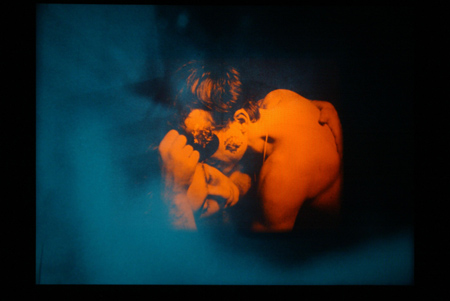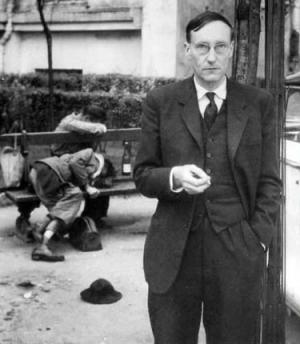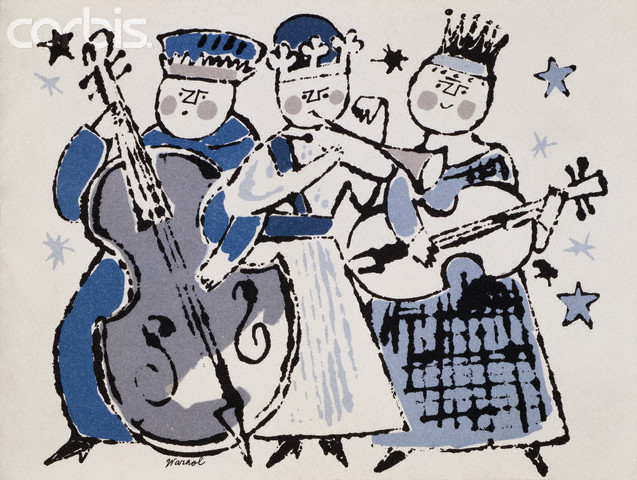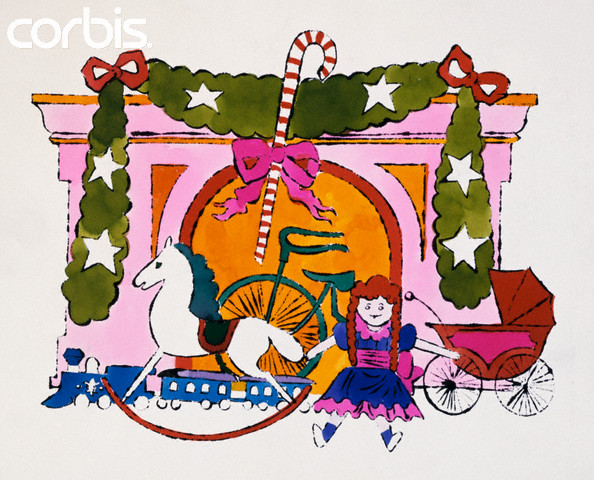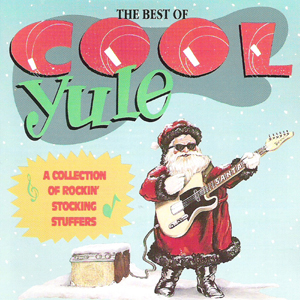BEATNIK CHRISTMAS: HOWLING DOWN THE CHIMNEY
T’was the night before Yuletide, and all through the pad/Not a hipcat was swinging, and, thats nowhere dad/The kid’s was all hung, on that stocking routine/Hoping the fatboy would soon make the scene/I was ready for snoresville, man was I beat/My main lady and I, were decked out to sleep
A screwy old geezer was flippin’ his lid/He told them to make it and man like they did/They was up on my chimney in bunches and clusters/Then chubby slid down,coming on like gang busters/
Like he was from nowhere, the most absolute/But lets face it, who cares when he left all that loot/He layed the jive on me as he sprang from the gig/Saying have a ”Cool Yule” man. Later, like dig.
The beats and the poets have long had an ambivalent relationship with Father Christmas and the Yuletide season, but nonetheless, Christmas has figured prominently, though sometimes obliquely in their lives; there was a tenuous spirit of goodwill that has been passed down….Still, Allen Ginsberg does resemble an archetypical Saint Nick.
Barbara Rubin’s 29-minute Christmas on Earth is the filmic record of an orgy staged in a New York City apartment in 1963. This double projection of overlapping images of nude men and women clowning around and making love is one of the first sexually explicit works produced by the American postwar avant-garde. Today Christmas on Earth generates a small but passionate discourse in avant-garde film circles.”Her whirlwind of activity in the United States and Europe between 1963 and 1968 is scantily documented and is leavened with well-varnished adoration, myth, secrecy and antipathy. Much of what is known about Rubin derives from publications by and about her friends and collaborators Allen Ginsberg, Bob Dylan, Jonas Mekas, Andy Warhol and the Velvet Underground. …In June 1963, Rubin borrowed a 16mm Bolex from Mekas. She first planned to make a film about hysteria, which she had witnessed in her stay at the hospital, but instead recorded communal love and sex. One weekend, she corralled five friends into the Ludlow Street crash pad rented by musicians John Cale and Tony Conrad and instigated a night of playful debauchery. “Barbara held us hostage for 24 hours, from early evening to the next day. It was very Cocteau-ish. We were locked in and hermeticized in this apartment, it was a very freewheeling situation,” recalled Malanga, one of the performers in the film.
It began around the 7 th day of Christmas 1943:
”As Christmas approached, momentous meetings occurred. Carr met Edie Parker, a rich Detroit woman and the girlfriend of Jack Kerouac. Kerouac was away at sea but, on his return, Edie introduced him to Carr in her apartment. Carr took Edie to meet Ginsberg, and gave him Kerouac’s address. The Beat heroes’ first meeting was, prosaically, at breakfast-time; they discussed poetry for hours and later paid a joint formal visit to Burroughs to see what they could learn. It was an ever-expanding literary party”
Atrabilious, mordant, misanthropic and lizard-eyed, Burroughs was a perfect Beat Generation equivalent toCharles Dickens Ebenezer Scrooge. He recorded, for posterity, “The Junky’s Christmas, a twenty minute epic poem of looking for a fix on Christmas Eve.
From the Blackbird Theatre’s ”Only In My Dreams”. This play included a segment which featured Truman Capote followed by a boozy portrayal of Kerouac whirling out a stream-of consciousness riff, “Visions of Gerard,” about his little brother dying at Christmas in their hometown of Lowell, Mass. Visions of Gerard was a portrait of his older brother Gerard as a saint who died when Jack Kerouac was four. The book is a poignant, elegant, but disturbing study on the fragility of existence. From Buddhism to Bible, Kerouac made a round trip on the spiritual road. Here is from Jack Kerouac, The Town and the City:
George Martin, almost as drunk as a lord, was singing loudest of them all, while the mother sat at the piano playing with a radiant and happy flush on her face. It made Mickey happy, yet also somehow sad to see his mother laughing and playing the piano like that. At Christmas, he always liked to just sit beside her on the couch. She let him have red port wine to drink with the walnuts, and watch the warm soft lights of the tree, red and blue and green, and listen to Scrooge on the radio. He liked to listen to Scrooge every year. He liked to have the house all quiet and Scrooge and Christmas songs on the radio, and everybody opening the Christmas presents after midnight Mass….
They all went in the house. The singing went on around the piano; big Mr. Cariter was doing a crazy dance with his wife’s hat on backwards. It was too much for Mickey who had to sit down in a corner and giggle. For a moment he was worried when the Christmas tree shook a little from side to side, but it had been well secured to the floor—Joe had done the job himself—and he guessed it wouldn’t fall over. He went and threw more tinsel on the branches.
Ruthey was whispering to Mrs. Mulligan: “That’s Mickey’s blue star up there on top of the tree. Every year we’ve got to get up on a chair and put it up or else! You know, orelse!“
Mickey heard, but he paid no attention. He just stood before the tree with his hands clasped behind him. Then his mother came running over and threw her arms around him saying: “Oh, my little Mickey! He loves his tree so much!” ( from The New Yorker )
And who can imagine Christmas without Andy Warhol? For all his abundant, glittering reputation, in one respect you could regard Andy Warhol as another Scrooge. There can hardly be a scarier image of miserly solitude than the one you find in his book The Philosophy Of Andy Warhol.The book, written in a gossipy, aphoristic style said this about the Yuletide season, “Christmas,” he writes, “is when you have to go to the bank and get crisp money to put in envelopes from the stationery store for tips. After you tip the doorman, he goes on sick leave or quits …” Bah! Humbug! In 1956, in addition to all the work he was getting drawing shoes and bags, he was commissioned to design Christmas cards for the Fifth Avenue temple of Tiffany & Co. Warhol’s cards were subsequently published by Tiffany’s every Christmas up to 1962, the year he started to show his iconic paintings of Campbell soup cans, and kicked his flirtation with Truman Capote.Clearly, with Christmas, Warhol’s commercial sensibilities recognized a collective dream when he saw one:
”Looking at Rockwell’s paintings, you realise exactly why Christmas interested Warhol as an artist. For he clearly did love it, and really put himself into his card designs. As Warhol might have said, he loved everything Pop, and Christmas is the most Pop thing there is. Christmas is at once materialistic and universal, kitsch and democratic, yet containing an image of a more decent collective life. Dickens knew this, Rockwell knew it, and Warhol knew it. As a child, he did not experience the perfect American Christmas portrayed year after year by Rockwell. For one thing, his family were poor. For another, as Byzantine Catholics they celebrated it on January 6.” ( Jonathan Jones, Guardian )
Bob Dylan is no stranger to Christmas, having ” come to Jesus” through California’s Vineyard Christian Movement. Throughout Slow Train Coming Dylan anticipates the humbling of the hubristic. In its opening track, “Gotta Serve Somebody,” he wags his finger at the powerful and self-promoting: ambassadors, heavyweight champions, business men, TV network executives, televangelists … a laundry list of confidence men made modern. Dylan’s subsequent Christian albums, Saved (1980) and Shot of Love (1981), reliably tell the stories of those without social or economic power — the “meek” of biblical lore — contrasting their economic and spiritual purity to an indifferent corporate establishment.
“Though Dylan seems to have stepped away from his deep, or at least public, engagement with Christianity prior to the rise of the religious right, the trajectory of his own career from the nineties onward still seems to parallel the pro-business path taken by many American evangelical and fundamentalist Christians.” Whether Dylan is a restless pilgrim, or fiery prophet of the Maccabees, the choreography of this Christmas video certainly appears to contain the necessary ingredients for a festive Bar-Mitzvah and Hora.
